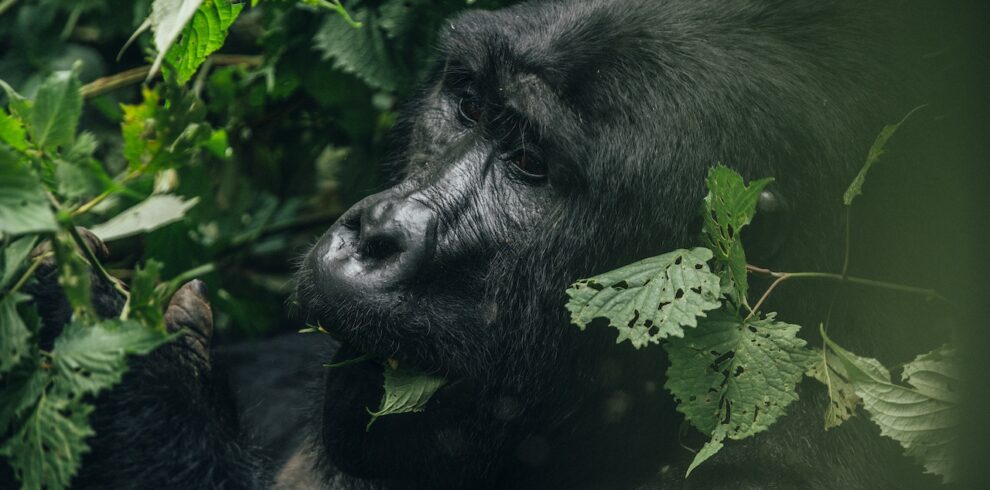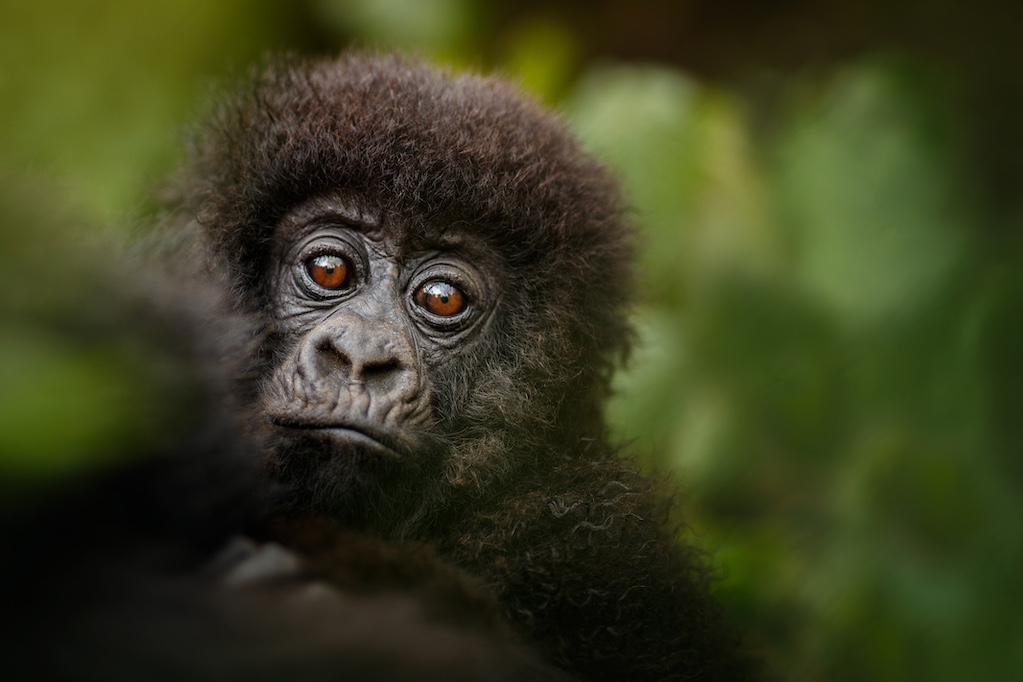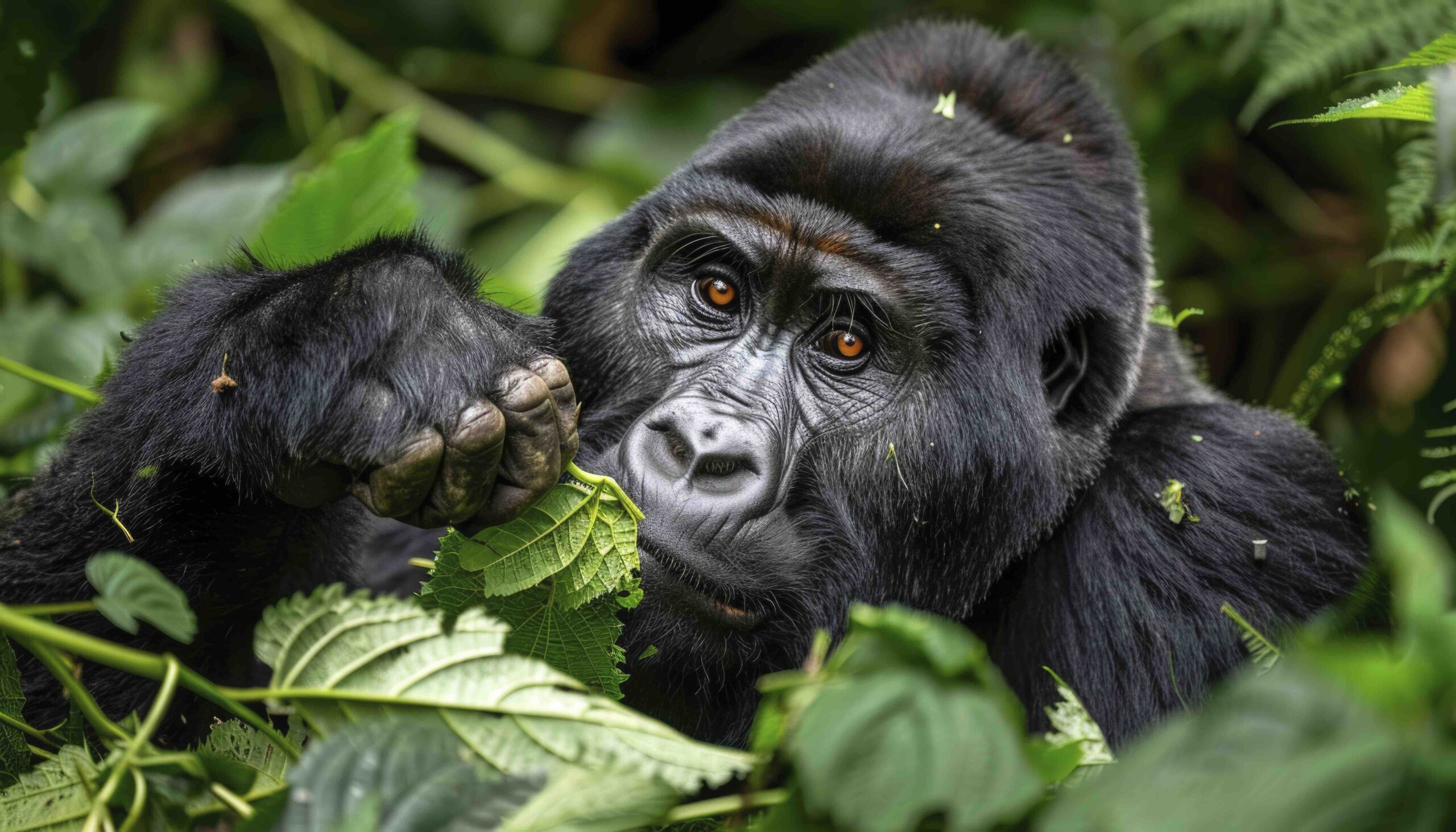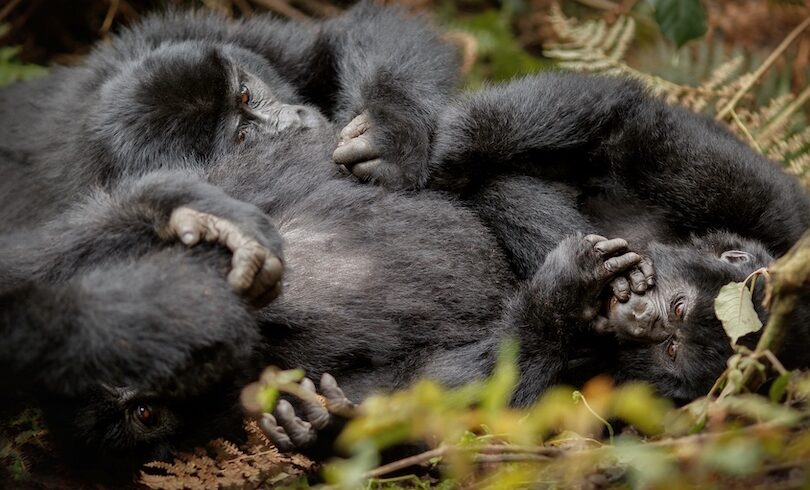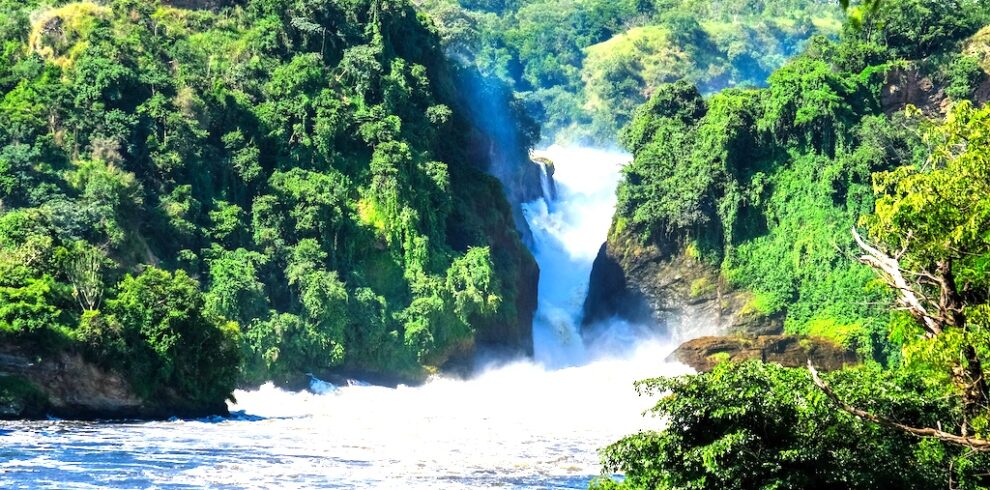Uganda Safari Costs
Top Destinations for Wildlife, Culture & Adventure in the Pearl of Africa
Types Of Safaris In Uganda & Their Cost
Affectionately known as ‘The Pearl of Africa’, Uganda is a lush paradise that brings together the best of East Africa—dense rainforests, vibrant landscapes, and an incredible array of wildlife. A safari in Uganda offers an unforgettable adventure, especially for those seeking the once-in-a-lifetime experience of gorilla trekking. Walk among forest giants in Bwindi Impenetrable Forest or track chimpanzees in the lush Kibale Forest. You might even spot golden monkeys in the misty Virunga Mountains.
The best time to visit Uganda for gorilla trekking is during the drier months from March to May and September to December—ideal windows for wildlife sightings and forest hikes. Over 20% of the country’s land is dedicated to wildlife reserves, ensuring conservation and a truly wild experience. Discover top destinations like Queen Elizabeth National Park, home to tree-climbing lions, or marvel at the power of the Nile at Murchison Falls.
Uganda’s charm lies in its raw beauty, warm people, and intimate encounters with nature. Whether you’re combining it with other East African gems or focusing solely on this remarkable country, Uganda promises a safari adventure like no other.
Uganda Safaris: What Are Your Options?
Uganda may be relatively compact in size, but it offers a wealth of experiences that are surprisingly easy to access. The capital city, Kampala, is just a short 35-kilometer drive from Entebbe International Airport, making arrival and onward travel a breeze. Many of Uganda’s top attractions are located within reasonable distance from one another, allowing travelers to combine destinations with ease. For instance, the famous Queen Elizabeth National Park and the iconic Bwindi Impenetrable Forest are close enough to form a seamless safari circuit.
There are a variety of ways to explore Uganda, each offering its own pace and perspective:
Fly-in Safaris & Transfers
Several of Uganda’s premier national parks are reachable via domestic fly-in charters, offering convenience and speed, especially for travelers short on time. However, these flights tend to come at a premium. For a more cost-effective and immersive experience, most travelers opt for road transfers using a 4×4 vehicle or minibus. Given the rugged terrain and unpredictable weather, 4×4 transport is often the most reliable and comfortable choice for navigating Uganda’s national parks and rural regions.
Gorilla Trekking in Bwindi
The highlight of any Ugandan safari, gorilla trekking in Bwindi Impenetrable Forest offers a rare opportunity to encounter mountain gorillas in their natural habitat. Led by experienced naturalist guides and trackers, treks through the dense jungle offer unforgettable moments of connection with these gentle giants, along with chances to spot other primates and forest wildlife. Trekking permits, group sizes, and time of year all influence availability and pricing—so booking early is always recommended.
Classic Wildlife Safaris
Beyond gorilla trekking, Uganda is home to some of Africa’s most scenic and wildlife-rich parks. Explore the vast savannahs of Queen Elizabeth National Park, renowned for its tree-climbing lions and abundant birdlife, or venture into Murchison Falls National Park to witness the mighty Nile River plunging through a narrow gorge. Traditional game drives offer thrilling big game encounters, while boat cruises along the Nile or Kazinga Channel provide a unique way to view hippos, crocodiles, elephants, and waterbirds from the water—though these excursions are typically priced separately from game drives.
Whether you choose to fly, drive, or mix both, Uganda offers a safari experience filled with diversity, depth, and beauty—perfect for both first-time visitors and seasoned travelers.
How Much Does A Uganda Safari Cost?
A Uganda safari typically ranges from $700 to $1,800 per person per night (based on double occupancy), depending on your level of comfort, time of year, and whether your itinerary includes fly-in transfers or the coveted gorilla trekking permits. Entry-level safaris start at around $700 per night, offering simple yet comfortable lodges and classic game drives. Mid-range options, which balance comfort with value, usually fall between $1,000 and $1,050 per night. For those seeking the finest in service, exclusivity, and amenities, luxury safaris—complete with high-end lodges, private guides, and fly-in access—can reach up to $1,800 per night.
While Uganda’s accommodations tend to be more modest compared to those in Kenya or Tanzania, they offer excellent access to premier wildlife destinations like Bwindi Impenetrable Forest and Queen Elizabeth National Park, along with warm hospitality and unforgettable scenery. Whether you’re on a budget or seeking luxury in the wild, Uganda delivers a safari experience rich in value and adventure.
Uganda Safari Tour Costs
As with any holiday, what you choose to do, and where you go will impact the general cost of your safari. The below table breaks down costs for Uganda safaris calculated per person per night sharing in both low and high season:

* Please note: all the costs are guidelines only and an average for per person, per night, sharing a room in High and Low Season, including the necessary permits, conservancy and park fees required.
They exclude international flights, visas and optional activities. Note that conservation fees, levies and permits are all subject to change. Peak or High Season generally runs over Christmas and New Year, and from about July to October.
Uganda Accommodation Costs
Uganda’s accommodation options are primarily concentrated in the southern and western regions, near the country’s two major wildlife hotspots—Bwindi Impenetrable Forest and Queen Elizabeth National Park. This strategic placement ensures visitors are never far from the action, whether it’s gorilla trekking, game drives, or boat safaris. While Uganda’s lodges and camps may not reach the ultra-luxurious standards often found in Kenya or Tanzania, the country still offers a wide range of stays, from comfortable tented camps to high-end eco-lodges with stunning views and warm service.
The cost of accommodation varies based on proximity to wildlife areas, the level of comfort, the activities included, and the time of year. Whether you’re seeking an authentic, rustic experience or a luxurious retreat in the wild, Uganda provides memorable stays that align with various budgets and travel styles.
Uganda Accommodation Prices

* Please note: all the costs are guidelines only and an average for per person, per night, sharing a room in High and Low Season. They exclude international flights, visas and optional activities. Note that conservation fees, levies and permits are all subject to change. Peak or High Season generally runs over Christmas and New Year, and from about July to October.
How The Time Of Year Affects The Cost Of A Uganda Safari
The cost of a Uganda safari is heavily influenced by the season, which closely follows the country’s rainfall patterns. Peak season occurs during the dry months of December to February and June to August, when conditions for gorilla trekking are most favorable and wildlife viewing is at its best—especially near water sources as the dry season ends. These months tend to command higher prices due to increased demand and limited availability.
In contrast, the shoulder and low seasons—particularly March to May and September to November—offer a more cost-effective alternative, with discounted rates, greater lodge availability, and fewer tourists. However, these wetter periods come with trade-offs: muddy trails, heavier rains, and less predictable trekking conditions, which can make gorilla tracking more challenging.
Whether you prioritize perfect conditions or better pricing, understanding Uganda’s seasons can help you plan the ideal safari experience.
Additional Costs
While many Uganda safari packages are labeled as “all-inclusive,” it’s important to understand that this often doesn’t cover everything. Typically, the term includes accommodation, meals, guided game drives, and sometimes select beverages—but not international flights, vaccinations, or extra excursions. Internal transfers, such as road or fly-in charters, may be included with some lodges but not all. Helicopter transfers, for instance, are usually charged separately. It’s also your responsibility to meet health requirements—Uganda mandates certain vaccinations, like yellow fever, which you’ll need to arrange with your doctor ahead of time. Additionally, tipping is optional but highly recommended, and it’s best to carry small denominations of cash for this purpose.
Other potential out-of-pocket expenses include personal and travel insurance, foreign transaction fees on credit cards, and extra activities like hot air balloon safaris, helicopter flips, or cultural village tours. While the Ugandan Shilling (UGX) is the local currency, U.S. dollars are widely accepted in tourism areas—though small local markets and curio shops often prefer cash. Exchange rates and foreign card fees may also impact your final spend. To avoid surprises, speak with one of our Africa Safari Experts who can walk you through what’s included and help you build a seamless, stress-free itinerary—because while Africa offers thrilling adventures, planning with clarity ensures your trip is nothing short of extraordinary.
Browse Uganda Safari Tours


